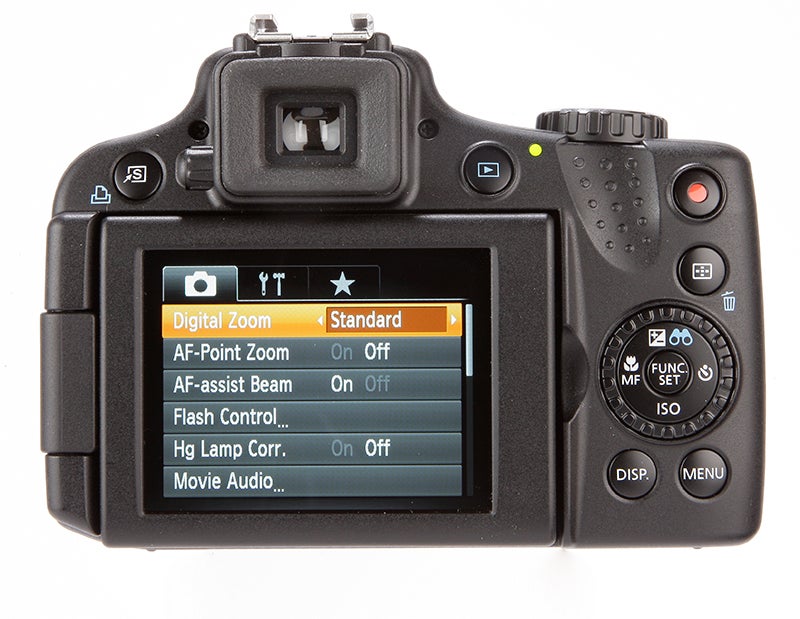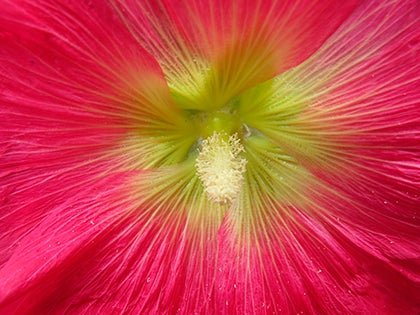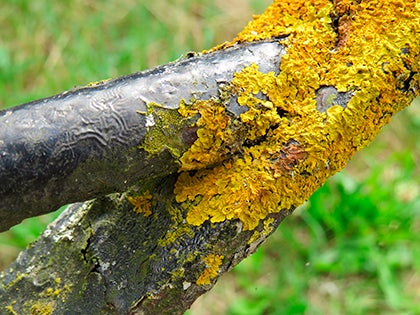Canon PowerShot SX50 HS Review - The SX50 HS boasts impressive features on paper, but read on to find out how it fares in the full What Digital Camera review
Canon PowerShot SX50 HS Review
Canon PowerShot SX50 HS Review – Performance and Image Quality
The overall level of the Canon SX50 HS’s performance is, on the whole, good although not without its flaws.
The “normal” continuous shooting mode is a modest with 2fps, and if you want the camera to focus it drops to around 0.8fps depending on how quickly the AF bites.
The flash recharge time is quite fast and the flash will sync at the camera’s top 1/200 sec shutter speed and because you have the accessory shoe, plop an external flash on there and you have a whole new ball game.
And so lets move on, onto the nitty gritty of how the Canon PowerShot SX50 HS’s image quality stacks up, and first up, that monster lens. While the camera retains a certain amount of pocketability, even with that 50x optic. But the glass is very sharp and performs well overall with bags of detail able to be rendered and held onto by the camera’s CMOS sensor.
As you zoom through the range, the SX50 HS’s relatively modest maximum apertures means as you increase the zoom ratio in use, you’ll increasingly need to either employ the services of a tripod or start to bump up the sensitivity (or both) even with the otherwise excellent image stabilisation switched on and active.
There’s little distortion, even at the 24mm end, but slight edge softness and drop in definition is apparent at full zoom. Use the Dynamic Range (DR) Correction Auto mode and the sensitivity bumps to ISO 320 and this can be useful as you zoom, yes there’s a tiny bit more noise, but the increase in detail in highlights and shadows is well worth this.
Again disappointingly should you switch to JPEG and RAW capture, then the DR Correction mode is not an option, it is switched off so you loose it’s extra bit of versatility (for the JPEGs) at a point where it might be most useful to have it to hand in your shooting armoury.
High ISO noise
Next up, let’s look over the image noise issues. Stick to settings below ISO 800 and you’ll be fine; Canon’s DIGIC 5 image engine does a great job of keeping the vagaries of image noise at bay, but beyond ISO 800, while noise increases, so does the camera’s efforts to reduce the noise issues and while it does a good fist of it, it also starts to strip finer image detail.
Bump the ISO to 1600 and it’s more of the same, noise well controlled but image detail scrubbed away and at ISO 3200 while the noise issues are well dealt with, the images look, well, unfocused. At ISO 6400, the SX50’s top sensitivity setting, it’s even more of the same, poor image sharpness, all fine detail is smoothed into oblivion, but image noise is reduced.
The SX50 HS’s metering is very good, overall, but as is common with such cameras, I found the centre-weighted average metering provided the best balance between subjects, the evaluative system seemingly underexposing slightly, but on everything; enter exposure compensation, if you need it.
Colour capture is also very good, natural and clean, again I left the camera to its own default devices here, but use any of the camera’s subject modes, filters or other gadgets and you can then tailor (or change) this to suit.

Raw issues
It’s here we enter one of my biggest gripes with the SX50 HS however, because if you shoot simultaneous RAW and JPEG files, and then switch to one of the camera’s automated shooting modes, in fact any setting outside of the manual control shooting options, it reverts back to JPEG capture only. Why?
One of the most useful ways to implement simultaneous RAW and JPEG shooting is in exactly this environment, where you want to shoot a JPEG with the filter or subject mode applied; I don’t know, say, the vivid setting for boosted colours, and have RAW version, to fall back on if you wish to.
That’s where the versatility of such a feature can lay within a camera such as this, a camera that allows for a more a creative approach for the novice and yet more snapping power for those more advanced photographers out there, per haps on a tighter budget or looking for – or wanting – that monster optic. To omit such a clearly useful feature seems, well, odd.
There’s a fair amount of chromatic aberration around high contrast “edges” in a shot, which lower apparent sharpness of the pictures, and when shooting JPEGs with neither DR or HDR modes on, highlight detail is blasted away very quickly and likewise shadow detail albeit to less of an extent.
White balance (WB) control is rather good on the Canon PowerShot SX50 HS, providing the usual range of presets, for most lighting such as tungsten, direct sunlight, shadow, two fluorescent modes, flash and two custom WB settings. Left on the Auto WB mode, the camera makes all the right choices, performing well on the subjects I’ve used for this test.






